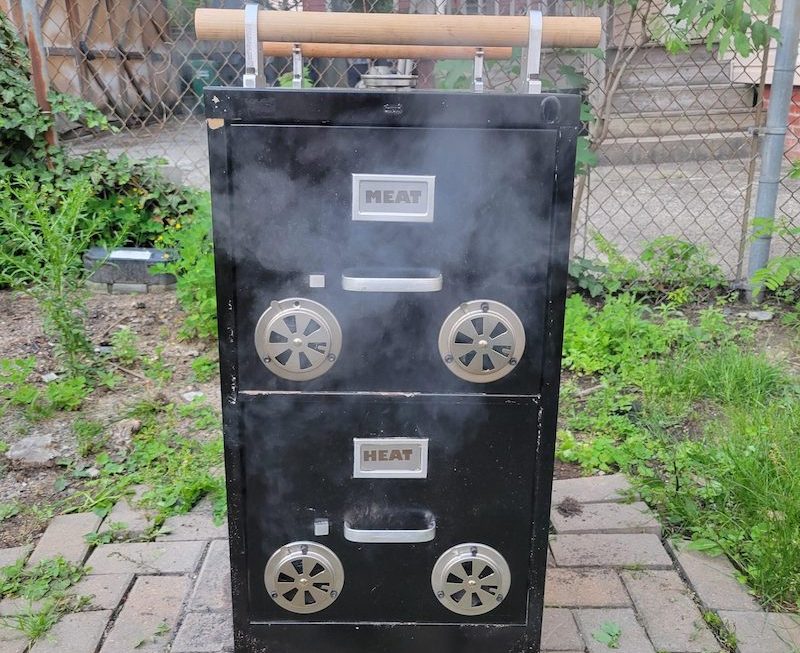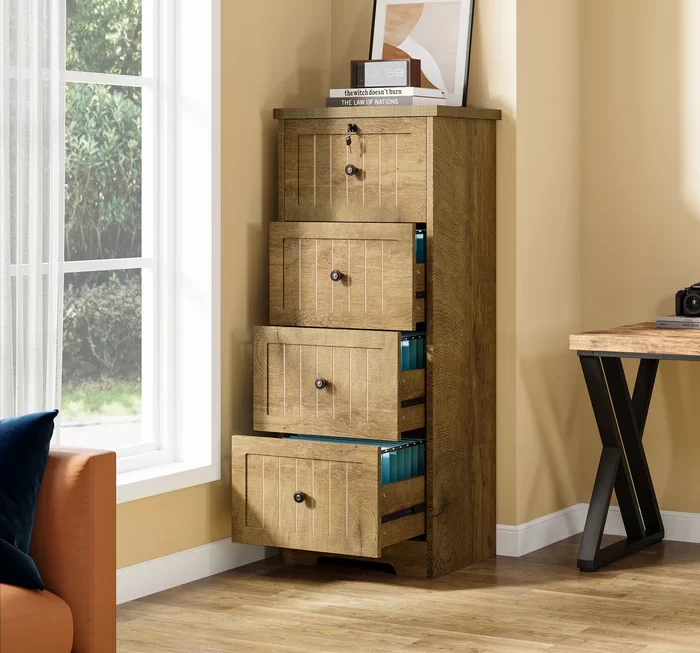A squeaky office chair can be quite annoying, especially in a quiet work environment. The irritating noise can disrupt concentration, productivity, and overall comfort. How to fix a squeaky upholstered chair? Fortunately, you don’t have to live with these annoying sounds forever. This comprehensive guide will show you how to fix a squeaky office chair step by step. By the end of this article, you’ll know how to identify the source of the squeak, select the right tools, and apply effective fixes.
Understanding the Problem: Why Does an Office Chair Squeak?
Before you can fix a squeaky office chair, it’s essential to understand why it squeaks in the first place. Various factors can contribute to this problem, and identifying the root cause is the first step towards resolving it. This section explores the common reasons behind a squeaky office chair.
Wear and Tear
Regular use can cause wear and tear on your office chair, particularly on the moving parts. Screws can loosen, springs may weaken, and the overall structure can deteriorate over time. As components wear out, they may start to rub against each other, causing the annoying squeaking sounds. Wear and tear are inevitable, but proper maintenance can extend the life of your chair.
Lack of Lubrication
Office chairs have several moving parts that need to be adequately lubricated to function smoothly. When these parts dry out, they create friction, leading to squeaks. Lubrication can wear off over time, especially if the chair is frequently used. Regularly lubricating these parts can prevent squeaks and ensure smooth operation.
Loose Screws and Bolts
Loose screws and bolts are a common cause of squeaky office chairs. Over time, the repeated movement and weight shifting can cause these fasteners to loosen. When this happens, the chair’s stability is compromised, and the metal parts can rub against each other, creating noise. Tightening these screws and bolts can often resolve the issue.
Structural Issues
Sometimes, the problem may lie in the chair’s structure itself. Cracks in the frame, worn-out wheels, or damaged seat mechanisms can cause squeaks. Structural issues are more challenging to fix and may require professional help or replacement parts. Identifying these issues early can prevent further damage and ensure the chair remains safe to use.
Tools and Materials You’ll Need
Having the right tools and materials is crucial for fixing a squeaky office chair effectively. This section lists the essential items you’ll need to gather before starting the repair process. Being well-prepared will make the task smoother and more efficient.
Basic Tools
- Screwdrivers: Both Phillips and flathead screwdrivers are essential for tightening and loosening screws.
- Allen wrenches: Many office chairs use hex screws, so having a set of Allen wrenches is necessary.
- Adjustable wrench: Useful for tightening larger bolts and nuts.
- Lubricant: WD-40 or silicone spray can effectively lubricate the moving parts. Avoid using oil-based lubricants as they can attract dust and dirt.
- Soft cloth: For wiping down surfaces and applying lubricant.
- Pliers: Useful for gripping and turning stubborn or stripped screws.
Optional Tools
- Rubber mallet: Can help in gently tapping parts back into place without causing damage.
- Replacement parts: In case certain components are damaged and need replacing, having appropriate replacement parts on hand can be helpful.
- Thread-locking adhesive: Helps to secure screws and bolts in place, preventing them from loosening over time.
Step-by-Step Guide to Fixing a Squeaky Office Chair
With your tools and materials ready, let’s get started on fixing the squeaky office chair. This step-by-step guide will walk you through the process, from identifying the source of the squeak to applying the appropriate fixes.
Step 1: Identify the Source of the Squeak
The first step in fixing the squeak is to identify its source. Sit in the chair and move around to pinpoint where the noise is coming from. Listen closely for the squeak and note if it’s coming from the seat, backrest, wheels, or another part of the chair. Knowing the exact location will help you target the problem more effectively.
Step 2: Tighten All Screws and Bolts
Once you’ve identified the squeaky area, start by tightening all the screws and bolts. Use the appropriate screwdriver or Allen wrench to secure these fasteners. Pay special attention to the base, arms, and backrest, as these areas often experience the most stress. Tightening loose screws and bolts can often eliminate the squeak or significantly reduce it.
Step 3: Apply Lubricant
If tightening the screws and bolts doesn’t resolve the issue, the next step is to apply lubricant. Spray a small amount of WD-40 or silicone spray on the moving parts, focusing on the areas where the squeak is coming from. Wipe off any excess lubricant with a soft cloth to prevent dust and dirt buildup. Ensure you apply the lubricant evenly and allow it to penetrate the joints and hinges.
Step 4: Check the Wheels
Wheels can also be a common source of squeaks. Flip the chair over and inspect the wheels for any signs of wear or damage. Remove any debris that may be stuck in the wheels and apply lubricant to the wheel axles. Spin the wheels to distribute the lubricant evenly and ensure smooth movement.
Step 5: Inspect the Chair’s Structure
If the squeak persists, it may be due to structural issues. Check the chair’s frame for any cracks or damage. Inspect the seat mechanism and ensure it’s functioning correctly. If you find any damaged components, consider replacing them or seeking professional help. Sometimes, a simple replacement part can resolve structural issues and eliminate the squeak.
Step 6: Reassemble and Test
After addressing the potential sources of the squeak, reassemble the chair and test it. Sit in the chair and move around to see if the squeak has been resolved. If you still hear the noise, recheck the areas you’ve worked on and make any necessary adjustments. Repeat the lubrication and tightening process if needed.
Preventing Future Squeaks
Fixing the current squeak is only part of the solution. Preventing future squeaks is equally important to maintain a quiet and comfortable office chair. This section provides tips on how to prevent squeaks and ensure your chair remains in good condition.
Regular Maintenance
Regular maintenance is key to preventing squeaks. Make it a habit to inspect your office chair every few months and address any issues promptly. Tighten screws and bolts as needed, apply lubricant to moving parts, and clean the chair regularly. A proactive approach to maintenance can prevent minor issues from becoming major problems.
Proper Weight Distribution
Ensure you’re using the chair within its weight capacity. Overloading the chair can cause structural stress, leading to squeaks and potential damage. Distribute your weight evenly when sitting and avoid leaning heavily on one side. This not only prevents squeaks but also promotes good posture and reduces the risk of back pain.
Avoid Excessive Movements
Excessive movements, such as rocking or swiveling aggressively, can cause wear and tear on the chair’s components. Use the chair as intended and avoid putting unnecessary strain on the moving parts. Gentle and controlled movements help maintain the chair’s integrity and prevent squeaks.
Use Chair Mats
Using a chair mat can reduce stress on the wheels and base of the chair. Chair mats provide a smooth surface for the wheels to glide on, preventing damage and extending the chair’s lifespan. They also protect your flooring from scratches and wear.
When to Seek Professional Help
While many squeaky chair issues can be resolved with DIY methods, some problems may require professional assistance. This section highlights when it’s time to seek help from a professional.
Persistent Squeaks
If you’ve tried all the steps mentioned above and the squeak persists, it may be a sign of a more serious issue. A professional can diagnose the problem accurately and provide a permanent solution. They have the tools and expertise to address complex structural issues that may be causing the noise.
Structural Damage
If you notice significant structural damage, such as cracks in the frame or broken components, it’s best to seek professional help. Attempting to fix these issues yourself can be risky and may cause further damage. A professional can assess the extent of the damage and recommend appropriate repairs or replacements.
Warranty Considerations
If your office chair is still under warranty, attempting DIY repairs may void the warranty. Check the warranty terms and contact the manufacturer or a certified service provider for assistance. They can offer authorized repairs and ensure your warranty remains intact.
Conclusion
Fixing a squeaky office chair is a manageable task with the right tools, materials, and knowledge. By understanding the common causes of squeaks, gathering the necessary tools, and following a step-by-step guide, you can effectively resolve the issue. Regular maintenance and proper usage can help prevent future squeaks, ensuring your office chair remains comfortable and quiet.
In 2024, if you encounter persistent squeaks or significant structural damage, don’t hesitate to seek professional help. A well-maintained office chair not only enhances productivity and comfort but also contributes to a pleasant work environment. With these tips and guidelines, you can enjoy a squeak-free office chair and focus on what truly matters—your work.








